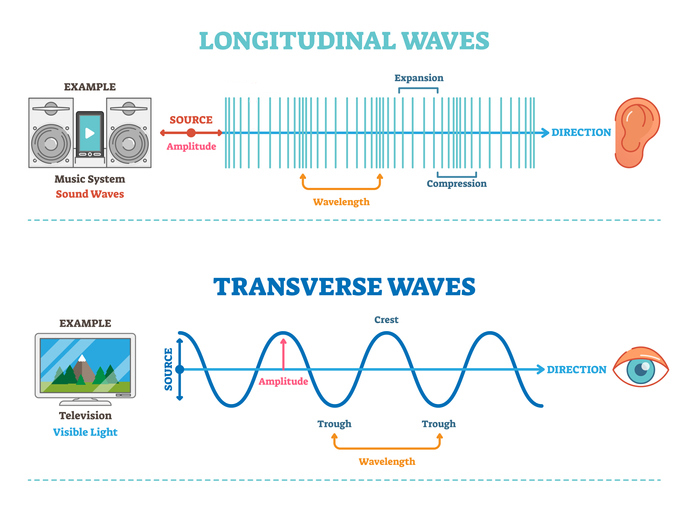What Type of Wave is Sound?

So what type of wave is sound? Sound waves fall into three categories: longitudinal waves, mechanical waves, and pressure waves. Keep reading to find out what qualifies them as such.
Longitudinal Sound Waves - A longitudinal wave is a wave in which the motion of the medium’s particles is parallel to the direction of the energy transport. If you push a slinky back and forth, the coils move in a parallel fashion (back and forth). Similarly, when a tuning fork is struck, the direction of the sound wave is parallel to the motion of the air particles.
Mechanical Sound Waves - A sound wave moves through air by displacing air particles in a chain reaction. As one particle is displaced from its equilibrium position, it pushes or pulls on neighboring molecules, causing them to be displaced from their equilibrium. As particles continue to displace one another with mechanical vibrations, the disturbance is transported throughout the medium. These particle-to-particle, mechanical vibrations of sound conductance qualify sound waves as mechanical waves. Sound energy, or energy associated with the vibrations created by a vibrating source, requires a medium to travel, which makes sound energy a mechanical wave.
Pressure Sound Waves - Because sound waves consist of compressions and rarefactions, their regions fluctuate between low and high-pressure patterns. For this reason, sound waves are considered to be pressure waves. For example, as the human ear receives sound waves from the surrounding environment, it detects rarefactions as low-pressure periods and compressions as high-pressure periods.
Transverse Waves - Transverse waves move with oscillations that are perpendicular to the direction of the wave. Sound waves are not transverse waves because their oscillations are parallel to the direction of the energy transport. Among the most common examples of transverse waves are ocean waves. A more tangible example can be demonstrated by wiggling one side of a string up and down, while the other end is anchored.
In many ways, sound waves are similar to light waves. They both originate from a definite source, and can be distributed or scattered using various means. Unlike light, sound waves can only travel through a medium, such as air, glass, or metal. This means there’s no sound in space!
Still a little confused? Explore our Sound Waves information guide or check out our other blog posts, "Is Sound Just Vibrations?" and "What is a Sound Wave in Physics?"
Investigate sound waves and sound intensity anywhere, any time with the PASCO Wireless Sound Sensor.






